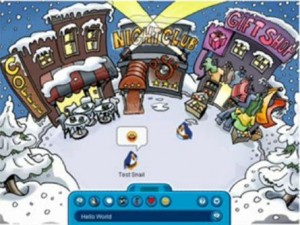The two readings selected for this week examine a question very close to my concerns over the children growing up digital, whether the technology that surrounds them at school and at home makes them into a different type of learner than what is described in many scholarly research. With a fondness for Vygotsky and the cognitive psychologists so influential to my early educational studies, I am inclined to say there is no great difference between what children were able to do prior to on-line interaction and now. They simply have abilities to use tools, modeled by their parents and peers, and will continue their development into higher mental functions the more they internalize use of such tools. Virtual worlds such as Club Penguin or Minecraft will enhance the imaginative or “figured world” (Holland et al, 1998) that include many of the same types of play that could be found in living rooms and playgrounds. It is still nice to have data that backs up this theory, and therefore looking at Jackie Marsh’s research provides some quantitative evidence alongside her qualitative study of primary grade students who use virtual social media sites.
My first encounter with one of her studied website, Club Penguin happened on my practicum, where laptop computer cart would be wheeled into the classroom so that the grade four students could work together on a social studies wiki I had designed. Those who finished the tasks early usually demanded free-time, and I became interested to see what the students could do independently with monitored access to the Internet. Most of the time, students would fuss over their log in name (or forgotten passwords) but once in the game showed a high level of compitence. As Marsh points out, most of the collaborative gaming happened between friends already in the classroom – usually one student asking another to join them in a particular chatroom or on-line activity. For most of the girls in the class, there was the cuteness factor of raising “puffers” and the boys seemed to enjoy the sledding and skiing activities, plus both girls and boys would gleefully engage in a snowball fight with whomever was on-line at the time. A benign game, as far as I can tell, and not so much under the influence of Disney cross-promotional marketing (users can now access Avengers penguins, based on the Disney-owned Marvel film franchise, are penguin princesses far behind?) that was promoted as the safest on-line site for children. Marsh investigates more thoroughly the possibilities of student interaction and cultural capital of both Club Penguin and Barbie Girls. Her conclusion, like many others investigating this field, is that more research needs to be conducted, and I would happily like to add my final project for LLED 558: Multimodalities and Literacy, once it is in a more publishable form!
Following Marsh’s engaging research, I decided to investigate one of the major professional organizations listed on the course outline, hoping to uncover some digital literacy gems for local Early Childcare Education professionals (such as my wife) but surprised to find most were American agencies. It is not such a surprise, at the PhD level, to encounter more information on education in the United States (even with my Master in Educational Technology, much of the latest trends seemed to be coming up from south of the border). The only international website (ISTE) linked me to a stub, one of those message pages that indicate the page could not be found, yet on further investigation, located the Standards for Teachers page, which like much at in the field of education (including the very department I got my master degree from) had gone through a process of rebranding to keep up to date with Web 2.0 changes. As for the document itself, Advancing Digital Age Teaching, it seems to be well thought-out and includes many buzz-worthy words and phrases (such as innovate, technology-enhanced learning environment and engage) that share a positive outlook on the future of teaching children younger than the ones Jackie Marsh. Yet while presenting a open-ended guideline for the qualities administrators want to promote with the educators they will hire (and possibly fire for not meeting their expectations), I can already hear the cry of complaint: “what do they really expect us to do?” One sticking point in particular is the respect for copyright nicely tucked into the second page of the document. Education 1.0 already features copious pages of photocopied material, some of it falling within the legally permitted 10%, and the occasional teacher playing a DVD or video for the class, skipping over the explicit warning that this video is not for public viewing (usually home use only). It is this mindset that produced the document on Education 2.0, I strongly argue, and it seems a bit more rethinking of values such as copyright is in order to make education truly relevant for 21st century citizens.

